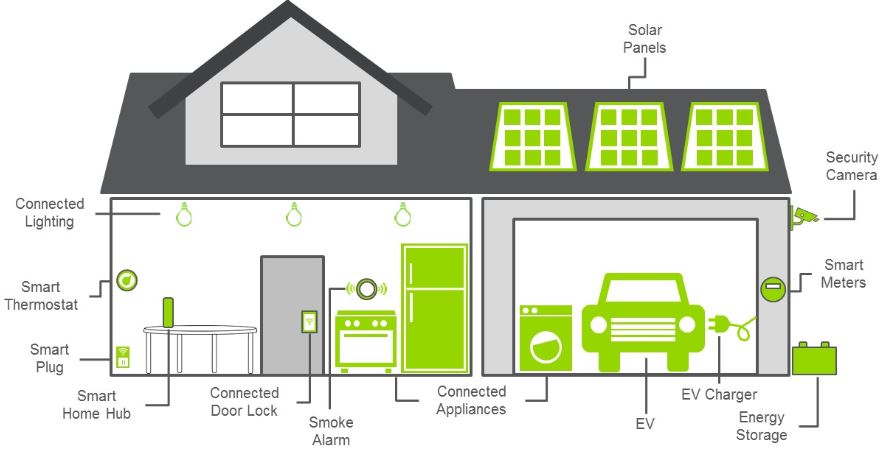
Background
This project was created by Lucia Gauchia, an electrical engineering professor at Michigan Technological University. The project had two main components to it; understanding the first life of the battery when it was used in the electric vehicle, and the second life of the battery when it would be used in the smart home.
The research done on the first life of the battery was to determine the lifetime estimation of an electric vehicle depending on the driving style, location, and charging method of the batteries. The results indicated that aggressive driving and recharging behavior have significant negative effect on the battery life.
The part of the project that will be focused on in this page is the second life of the battery. When a battery is removed from an electric vehicle it still has roughly 80% of the capacity that it originally started with. This capacity decreases over time and the goal of the project was to look at how the battery was affected when used in the smart home. Mini simulations were created using 3.4Ah Lithium Ion batteries and were analyzed to better understand the capacities of the battery and how they are affected. In the future, professor Gauchia was hoping to complete the work done on the 3.4Ah batteries with 16 64Ah Nissan Leaf Batteries. The project ended August 2019 when Professor Gauchia left MTU and moved home to be with her family.
Mini Simulation
The mini simulations were created to test 3.4Ah Lithium Ion batteries and were used to simulate the charging and discharging of the batteries in a smart house. A code created by the team was used along with load profiles to run the simulation. The code initially needed to be adjusted to ensure the hardware was producing the load profile as close to the given profiles as possible.
The next step in the project was to test a new 3.4Ah battery and analyze how the capacity is affected over time. The SOC/OCV curve for the battery was initially created by charging the battery completely, discharging the battery 10%, waiting for it to rest, and then taking the OCV and Ah measurements. This was done until the battery reached 10% if its initial value. At each 10% increment an Electrochemical Impedance Spectroscopy (EIS) test was done to create the complex Z graph at that capacity percentage. Later in the testing these graphs were used to create the equivalent circuit for the battery. The capacity of the battery was then measured by charging the battery fully and recording the Ah it ended at. The batteries were then run through the 24-hr testing that simulates one day's worth of use in a smart home. The smart home was assumed to have an electric vehicle that would charge from the battery and solar panels that would recharge the battery. These assumptions as well as the possible location of the home had a major effect on the load profiles used in the simulation. The 24-hr code was run 20-30 times in 8-hr increments. The procedure can be seen below. After these were completed, the capacity of the battery was measured again. Due to the project being cancelled, only a few of these 24-hr tests were able to be completed and the full effect of the smart home on the capacity of the battery was not determined.
3.4Ah Battery Load Profile Procedure
Nissan Leaf 64Ah Battery Testing
While there was no actual testing done with the Nissan Leaf batteries due to the project being cut short, the plan of the project was to run 24-hour codes similar to the ones done in the mini simulation and analyze how the capacity of the used electric vehicle batteries would be affected over time. One task of this section was completed and a testing procedure for was created. This testing procedure is attached below.
Nissan Leaf Battery Testing Procedure
References
M. Jafari, A. Gauchia, S. Zhao, K. Zhang and L. Gauchia, "Electric Vehicle Battery Cycle Aging Evaluation in Real-World Daily Driving and Vehicle-to-Grid Services," in IEEE Transactions on Transportation Electrification, vol. 4, no. 1, pp. 122-134, March 2018.
“Smart Home For Energy Saving " IJENKO - Internet of Things Platform.” IJENKO, www.ijenko.com/smart-home-for-energy-saving/.